Tokyo Art Beat, Then and Now: A Conversation
Tokyo Art Beat (TAB) is a Japanese/English bilingual art news site started in 2004. It recently announced it has joined the art and blockchain technology firm Startbahn and re-launched as a new company. Looking ahead, how will TAB change? Startbahn CEO Taihei Shii discusses the future with Kosuke Fujitaka and Xin Tahara from TAB.
Statement by Paul Baron (TAB co-founder and Gadago NPO Chairman)
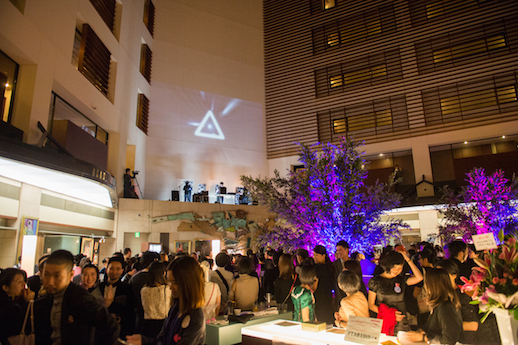
How Will TAB Change?
First of all, why has TAB joined Startbahn? How will TAB change going forward?
Taihei Shii: You might be worried that the TAB website will suddenly be flooded with ads and promotions (laughs). What I want to tell you first is that won’t happen. We’ll update TAB’s usability and design, but TAB fans can expect these changes to be things that they’ll appreciate.
I’m first of all a TAB user and a fan myself. When thinking about TAB’s future, I wondered if by joining Startbahn, it might benefit from tech stability and updates to things like its recommendation functions and usability. That’s how things got started.
I once had plans for a website that would introduce exhibitions using AI technology at Startbahn, but since TAB already existed, I decided there was no need for a new launch. Then in May 2018, I contacted Xin Tahara to ask if there was something we might be able to do together.
So by joining Startbahn, TAB is taking steps toward a major renewal of its usability and design. Xin, what was your reaction when Taihei first proposed joining Startbahn?
Xin Tahara: Taihei reached out to me right at a time when I was worrying about the future of TAB. When I told him about the issues we were facing, he said, “Let’s resolve them together (with Startbahn).” After that, Startbahn’s financing became big news. It was a rare bright spot in the art business world, and I thought that was interesting. It seemed likely that the opinions of the TAB founding members would be divided, though…That was another thought I had.
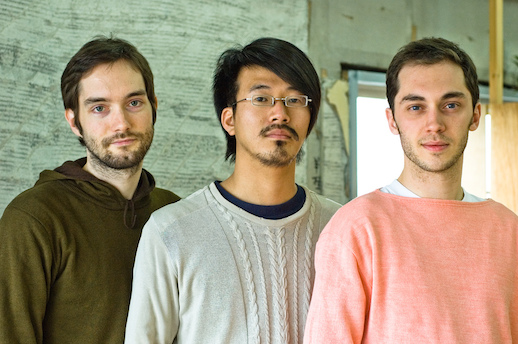
One of those co-founders is Kosuke Fujitaka. Kosuke, how did you feel when you heard TAB and Startbahn were joining forces?
Kosuke Fujitaka: I thought that if TAB was going to join another company, it had two options. One, it could go with a well-known firm with stability, or two, it could choose somewhere with some unknowns but a sense of momentum, a place that it could evolve with. I think for the sake of its future growth, TAB chose the latter – Startbahn. I personally had an interest in blockchain technology, similar to what I felt with the rise of the internet.
Also, before I spoke with Taihei, I’d heard about the issues the TAB team was facing. It had operated as an NPO since 2004 – more than 15 years – and in many ways it looked like it would be difficult to continue doing so. I’d taken a step back from TAB operations when I moved to New York in 2008, but I understood that TAB was struggling.
Tahara: The art world has a reputation for being glamorous, but it’s really a lot of blood, sweat, and tears. Even with work we asked for, much of it ended up being done on a volunteer basis, and I didn’t like that. There were also a lot of misunderstandings with the NPO status and because of that staff felt constrained, so I’d always wanted to make TAB a company somehow. Just when all the operational and management issues were coming to a head, Taihei reached out to me.
Fujitaka: The incompatibility of the Japanese NPO structure and TAB’s business model ultimately was an issue. Philosophically speaking, TAB was a good fit as an NPO, but from a financial incentive perspective it just didn’t work out. TAB had operated for around 15 years as an NPO without tax advantages.
To be honest, the TAB co-founders and directors would have preferred TAB remain an NPO since it was created as one, but it just couldn’t raise the funds for its future as an NPO. One of the things that make TAB special is its cross of art and technology, but with technology evolving by the day, the costs for catching up are higher than 15 years ago. It’s difficult for NPOs as organizations to invest significantly in technology. By joining Startbahn, I expect TAB to gain some new energy and resolve its tech issues.
Shii: I’d known about Kosuke though the internet since the early 2000s. I read his blog and respected him from afar. What always struck me about him is that he doesn’t exaggerate, he doesn’t make conjectures, he always says the right thing. During the negotiations between TAB and Startbahn, he was confident that if we hammered out a consensus, we’d find a good way forward, which helped us proceed.
Fujitaka: As an NPO, the biggest engine of our operations was the passion of everyone, from the staff to the users. Switching to a company status is a big change, so consensus building definitely took a lot of time. In the end, though, we were able to get to a good place, and I’m really looking forward to what comes next.
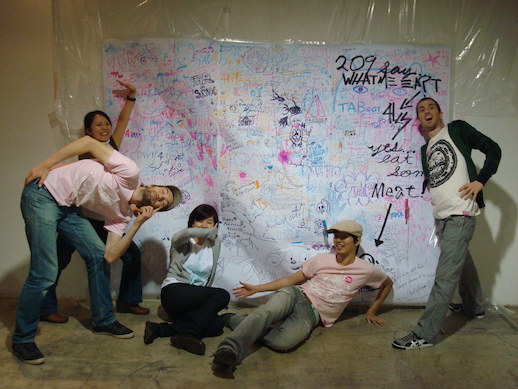
Japan’s Only Bilingual Art Media Outlet
Shii: One of the things I think is great about TAB as a user is that it has always been accurate in its judgments. For example, it was quick to introduce social media and it released an app pretty early on. And it’s not just been a fast adapter – its usability is always spot on, too.
Fujitaka: Right. When the app was released around 2010, apps themselves were pretty rare in Japan, and it stayed at number one in the App Store Lifestyle section for a long time.
TAB has also been a leader as an art information website. In a previous interview with the co-founders, I remember Kosuke saying: At the time we started TAB in 2004, many people had quite a negative image of the internet, and it was really difficult to convince the PR people of various galleries and art museums about the merits of TAB.
Fujitaka: That really seems like another lifetime looking back on it now. (Laughs). The art world is surprisingly conservative when it comes to things like technology and money. At the time, the internet in its post-bubble era had a sort of a shady image, and we were sometimes told places only communicated by FAX. Even in 2020, in the U.S. for example, finally half of advertising fees are going toward online formats and art fairs are also moving online. Parts of the lifestyle and art industries have been aggressively moving online. And here we have TAB, which creates data that can be used in the real world. Until now it has taken offline exhibition information and put it online, but in the future I think it could take a step further, working not just with offline data but creating services for online operations, as well.
What do you expect from TAB as an art media outlet?
Tahara: One type of art news story that attracts attention in Japan is “This exhibition drew hundreds of thousands of visitors!” So far TAB has posted more than 100,000 exhibition and event listings* ranging from shows at small cafes, art spaces, and commercial galleries to blockbusters at major museums. The information on TAB has probably led to millions of people in total going to see art. It’s not just the exhibitions, artworks, and artists that underpin Japan’s art scene, but also these art fans visiting shows in hundreds of thousands or millions. Whether they’re famous or unknown, the existence and experiences of these people should be properly evaluated and not just forgotten en masse. TAB is really the only art media outlet that’s uncovering this phenomenon. With the power of Startbahn’s technology and further support, even without the thrill of the rise of the internet, I believe we can make innovations that are close to that experience a reality.
(*Editor’s note: TAB listings surpassed 100,000 in December, 2020).
Shii: I think that as a bilingual website, TAB plays a very, very important role in the Japanese media from a global perspective. It’s difficult to get a view of what’s going on in the world when you’re in Japan, but art has a global premise, which means the Japanese media needs to challenge itself to broaden its horizons.
Fujitaka: I agree. The original reason for making TAB bilinguals was to meet the needs of foreign art fans living in Tokyo. But it’s turned out that besides this, TAB also lets people overseas know about exhibitions happening in Japan, and it has built up a data base of exhibition info going back more than ten years. Also, to further increase awareness of Japanese art overseas, TAB will continue to focus on its bilingual aspect.
That said, TAB’s core function is to support people who go to see exhibitions in Japan. In the future, we hope to not just list information on exhibitions, but also post detailed artist profiles so that we can increase data visibility and also provide information and support for buying and owning art. If we can do that, I think we can connect art and people in ways that go beyond listing information for going to see exhibitions.
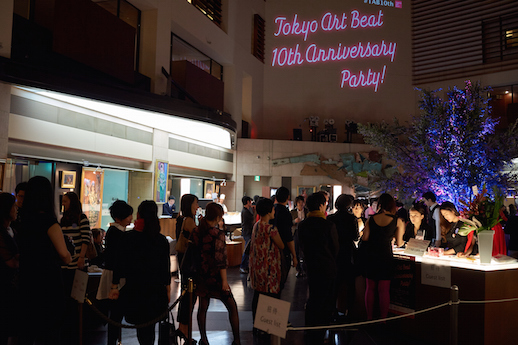
The Changing Art Scene
Last year COVID-19 shut down exhibitions and major art fairs, making the art industry take another look at its practices. What are your thoughts on the art world in Japan and abroad now?
Fujitaka: I felt that with COVID in 2020, the more down-to-earth art scene I liked had maybe finally returned. For the past ten years or so, perhaps due to a global glut of money, New York has been attracting rich people from around the world who buy art, and the art world’s values had steadily shifted toward being more and more money-driven. I had resigned myself to this and lost a bit of interest in art. Then COVID swept the world and for six months or so everyone’s interest seemed to become more personal again. I’m excited about that development for the art world.
On the art scene overall, we’re seeing movements like MeToo and BLM make headway on lists like the Power 100. There’s also been a dramatic shift toward minority artists rising in the ranks as major players. In New York, there has been a real increase in exhibitions of Black artists. Also, as seen with Ruangrupa being chosen as director for documenta fifteen, artists from Southeast Asia and other countries that until now have been considered “emerging” are getting more attention on a global scale, while Japan, as one of the relatively older “developed” countries, might be considered established and “mature,” to put it nicely. I think the artists coming newly out of Japan need to change their strategy.
Shii: The art market and art scene have been run by white men and centered around regional areas like New York and London. I’ve never been particularly enamored with that art world, but I hope that with the birth of BLM amid COVID and social anxiety, we’ll see an end to those aspects of the art scene that sang the praises of diversity while keeping things homogenous. Startbahn’s vision for the future is to provide value management and maintenance for not just the global 0.01% of artists but the remaining 99.99% as well, and by doing so involve as many people as possible in dynamism of art. The recent direction of the art world and Startbahn’s vision for the future are both rooted in in the fundamentals of human behavior and economics – they seek to avoid social anxieties caused by inequalities. I feel like society is shifting in this direction.
Tahara: When we held the TAB 10th anniversary party, there ended up being over 600 people who came, even though we didn’t really put the word out that much. TAB’s services have always run on the passion of our users and advertising. It’s a real shame we haven’t been able to update the website and the app as much as we would have liked, but I hope users will look forward to future improvements as much as I am. We want to continue providing a service that treats unique spaces and events in Tokyo and elsewhere equally, picking up as much information as we can without getting too swept up in larger narratives. That’s what I personally like about TAB and sense for its future potential.
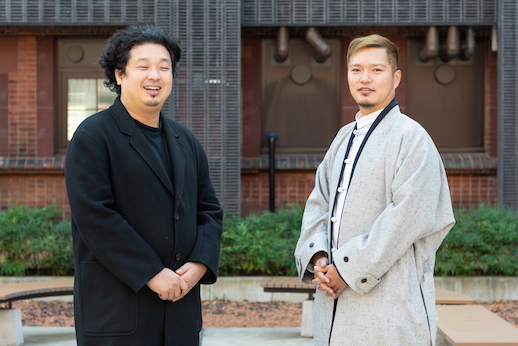
Taihei Shii
CEO of Startbahn. Born in 1977. Spent his childhood in the U.S. Graduated from The University of Tokyo Graduate School of Interdisciplinary Information Studies. Graduated from Tama Art University Oil Painting Department in 2001. Creates “art for the internet age,” participates in shows at galleries and museums. Came up with concept for Startbahn in 2006, received patents in Japan and U.S. Started company while in graduate school. Teaches at Tokyo University of the Arts, gives lectures and talks. Enjoys billiards.
Kosuke Fujitaka
Co-founder of Tokyo Art Beat. Born in Osaka in 1978. Graduated from Tokyo University Department of Economics. Moved to New York in 2008, launched NY Art Beat. Writer, coordinator, advisor on art-related matters.
Xin Tahara
Brand director of Tokyo Art Beat. Born in 1983. From Hakodate, Hokkaido. Interest in photography led him to gallery hopping while in university. Has worked as a bar tender and for 101 Tokyo Contemporary Art Fair. Tokyo Art Beat staff member from 2009.



